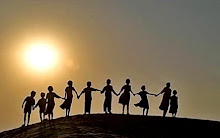By Uttam Mukherjee
Lohardaga: While efforts are on to form a new government in Jharkhand, Oraon tribals see young and dashing Lohardaga MLA Sukhdeo Bhagat as the next chief minister of the state.
They argue that representatives from three out of the four major tribes in Jharkhand have already been given opportunity to serve the people as CM. Now it is turn for Oraons to have an MLA belonging to the tribe as the CM of Jharkhand.
Narayat Oraon, chief of Raji Padha Samiti - the core body of Advasis - said time demands that the Oraons be given the honour to chose Congress' Lohardaga MLA Sukhdeo Bhagat as the most suitable candidate as the chief minister of Jharkhand.
He cited the examples of Madhu Koda from the Ho tribe, Babulal Marandi and Shibu Soren from Santhali and Arjun Munda from Munda tribe who had earlier served the state as Cms much to the pride of their respective tribe.
"Now when efforts are on to form a new government in the state, an MLA from the Oraon tribe be made the CM ," the Padha chief said.
"Sukhdeo Bhagat is the pride of Oraon tribe. Not only is he the most suitable candidate to be made CM, there are other reasons, too. Bhagat is well qualified and a post-graduate from Delhi University. This besides, Bhagat has administrative experience given that he joined politics after resigning as circle officer. In last four years his attitude and sincerity impressed everybody in the Assembly. He is also non-controversial and equally popular among Opposition leaders," Oraon said.
When asked for his reaction, Bhagat said although he respected the sentiments of his tribe, the matter (his becoming the CM) rests with the party leadership and the UPA MLAs.
"I'll abide by whatever decision is taken in favour of the state's progress," he said. On the possibily of government formation, Bhagat said he was optimistic that a new government would be formed by the second week of July.
He, however, made it clear that the government would be formed only in the conditionn that it is Congress-led with the UPA partners and others giving unconditional support.
Source: The Times Of India
Lohardaga: While efforts are on to form a new government in Jharkhand, Oraon tribals see young and dashing Lohardaga MLA Sukhdeo Bhagat as the next chief minister of the state.
They argue that representatives from three out of the four major tribes in Jharkhand have already been given opportunity to serve the people as CM. Now it is turn for Oraons to have an MLA belonging to the tribe as the CM of Jharkhand.
Narayat Oraon, chief of Raji Padha Samiti - the core body of Advasis - said time demands that the Oraons be given the honour to chose Congress' Lohardaga MLA Sukhdeo Bhagat as the most suitable candidate as the chief minister of Jharkhand.
He cited the examples of Madhu Koda from the Ho tribe, Babulal Marandi and Shibu Soren from Santhali and Arjun Munda from Munda tribe who had earlier served the state as Cms much to the pride of their respective tribe.
"Now when efforts are on to form a new government in the state, an MLA from the Oraon tribe be made the CM ," the Padha chief said.
"Sukhdeo Bhagat is the pride of Oraon tribe. Not only is he the most suitable candidate to be made CM, there are other reasons, too. Bhagat is well qualified and a post-graduate from Delhi University. This besides, Bhagat has administrative experience given that he joined politics after resigning as circle officer. In last four years his attitude and sincerity impressed everybody in the Assembly. He is also non-controversial and equally popular among Opposition leaders," Oraon said.
When asked for his reaction, Bhagat said although he respected the sentiments of his tribe, the matter (his becoming the CM) rests with the party leadership and the UPA MLAs.
"I'll abide by whatever decision is taken in favour of the state's progress," he said. On the possibily of government formation, Bhagat said he was optimistic that a new government would be formed by the second week of July.
He, however, made it clear that the government would be formed only in the conditionn that it is Congress-led with the UPA partners and others giving unconditional support.
Source: The Times Of India
























